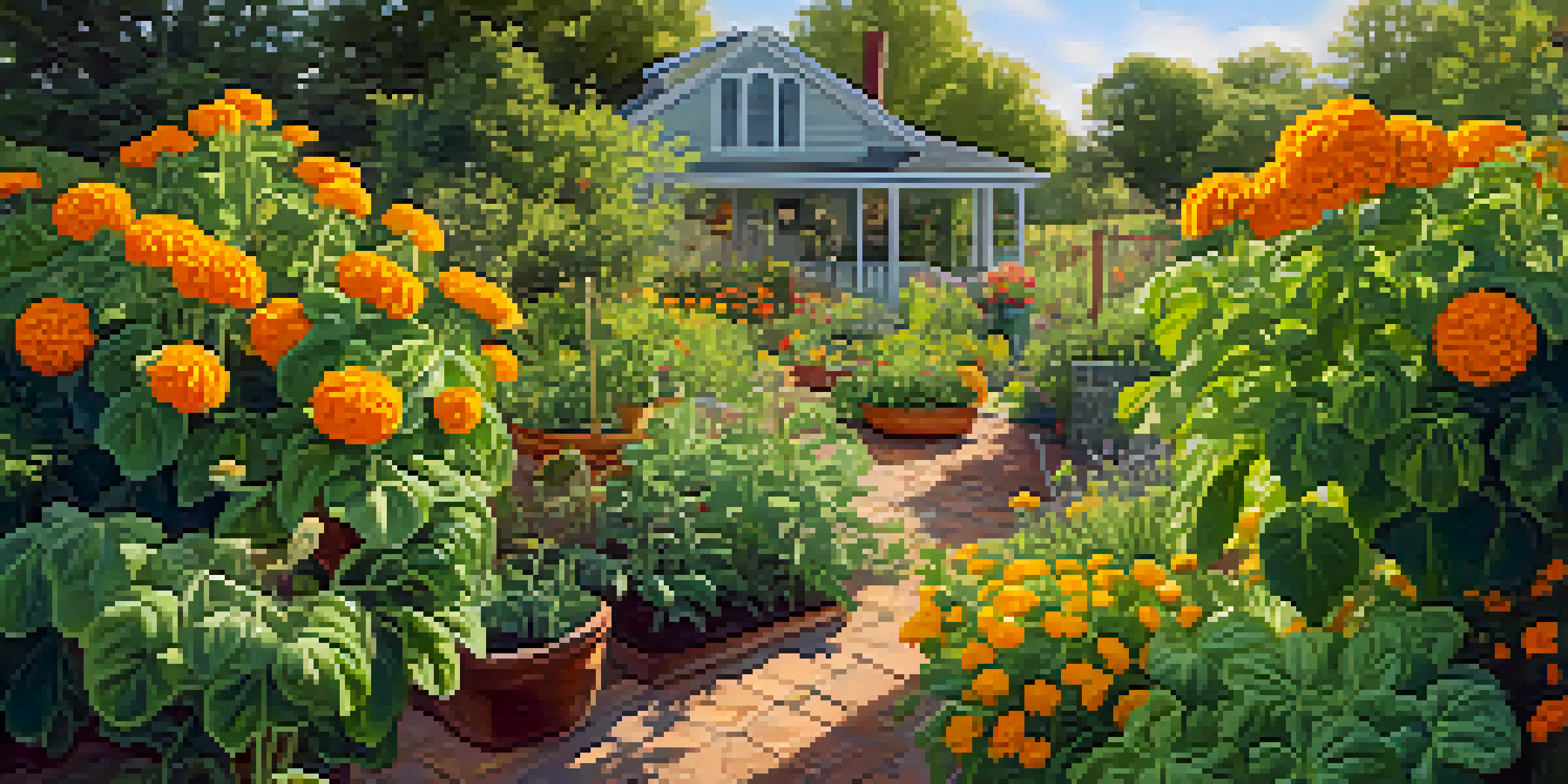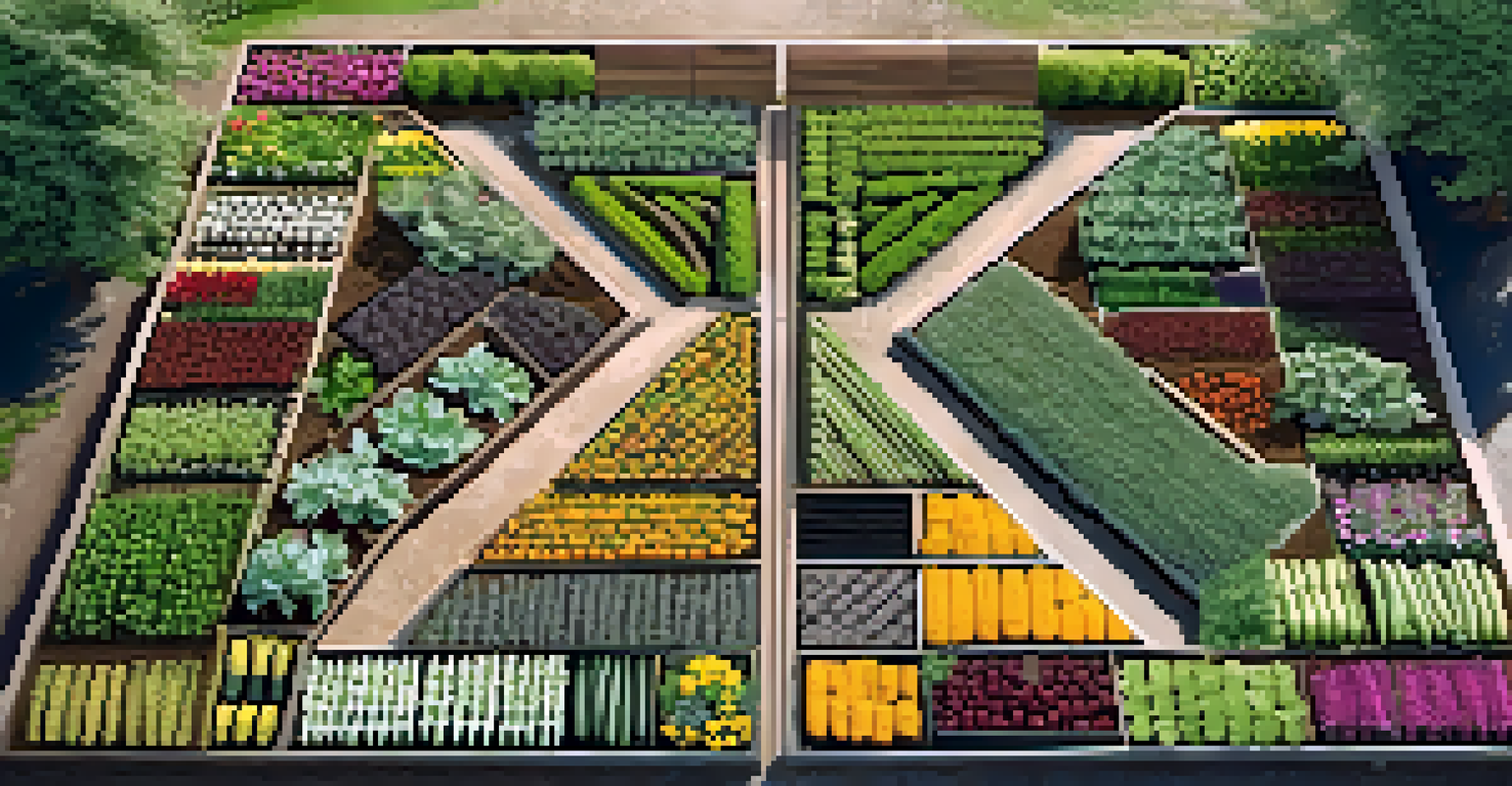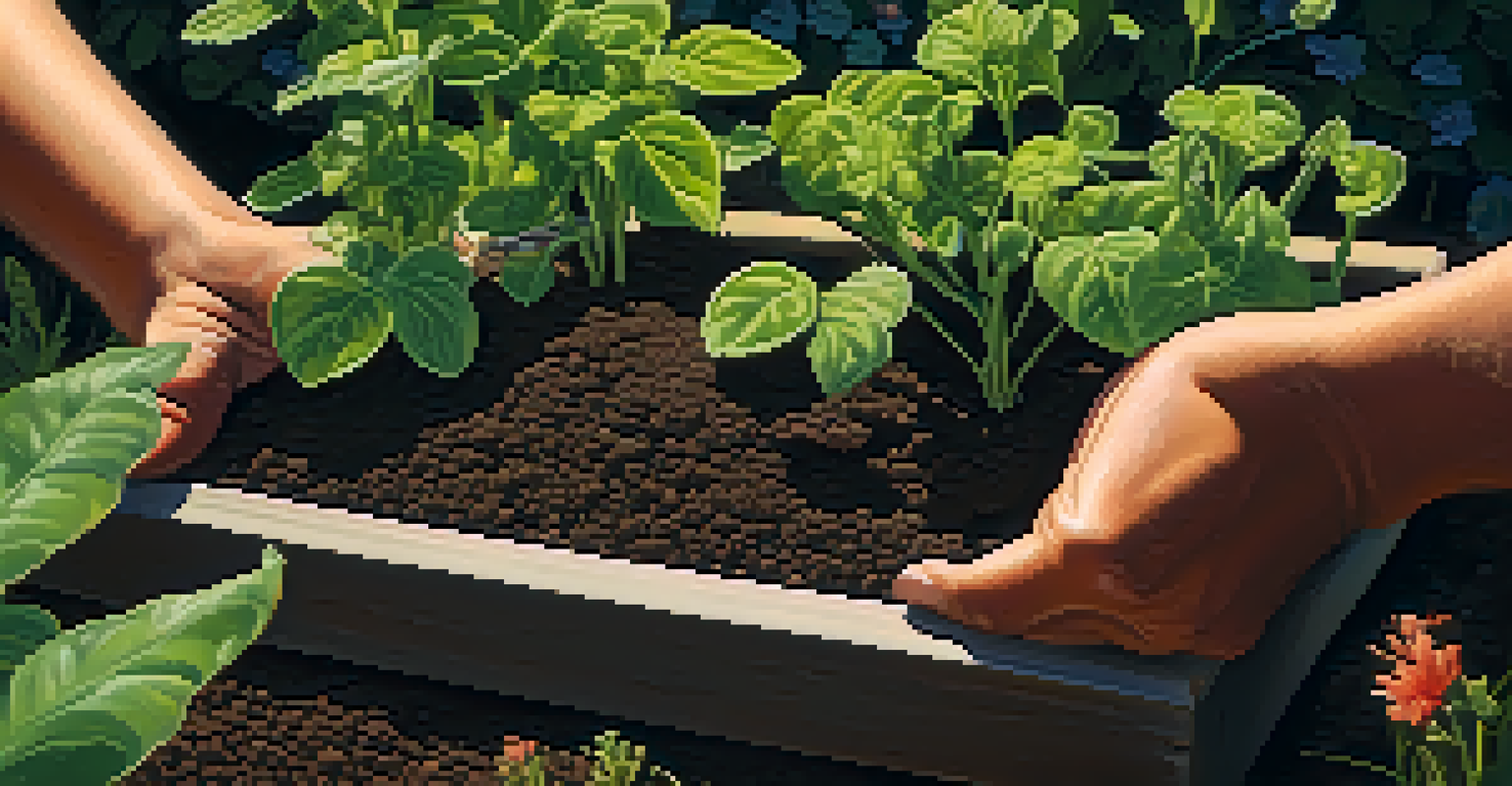The Science Behind Companion Planting and Its Benefits

What is Companion Planting? A Quick Overview
Companion planting is a gardening technique that involves growing different plants together for mutual benefits. This practice can enhance growth, deter pests, and even improve flavor. It's like planting your garden with friends who support each other, making the whole ecosystem thrive. Simple yet effective, companion planting has been used for centuries across various cultures.
The best way to ensure a bountiful harvest is to plant the right combinations of crops together.
The concept revolves around the idea that certain plants can help each other grow better when paired together. For example, tomatoes and basil are a classic duo, with basil helping to ward off pests that might harm the tomato plants. This synergy not only boosts the health of the plants but also enriches the garden's biodiversity.
In essence, companion planting taps into the natural relationships in nature, promoting a balanced environment. This method reduces the need for chemical fertilizers and pesticides, making it a more sustainable choice for gardeners. As more people lean towards eco-friendly practices, understanding companion planting becomes increasingly relevant.
The Science Behind Companion Planting
The science of companion planting is rooted in the interactions between plants. Some plants release natural compounds into the soil or air, benefiting their neighbors. For instance, marigolds are known to exude a scent that deters nematodes, which can harm root systems. This is a prime example of how plants communicate and interact in ways that can be beneficial to one another.

Additionally, certain plants can enhance nutrient availability in the soil. Legumes, like beans, have the unique ability to fix nitrogen, enriching the soil for other plants. This not only boosts the health of neighboring plants but also promotes a more fertile garden overall. The interplay of roots and nutrients creates a thriving ecosystem.
Companion Planting Basics
Companion planting involves growing different plants together to enhance growth, deter pests, and improve flavor.
Understanding these interactions allows gardeners to make informed choices about which plants to pair together. It’s a fascinating field that combines botany, ecology, and even a bit of chemistry. By harnessing these natural relationships, gardeners can create healthier and more productive gardens.
Key Benefits of Companion Planting
One of the most significant benefits of companion planting is pest control. Certain plants can naturally deter pests, reducing the need for harmful pesticides. For example, planting garlic near roses can repel aphids, keeping your garden healthy without harsh chemicals. This not only protects the plants but also contributes to a healthier ecosystem.
Companion planting is a way of using nature's wisdom to create a healthy garden ecosystem.
Another advantage is improved pollination. Some plants attract beneficial insects, like bees, which are crucial for pollination. By planting flowers alongside vegetables, you can create a more inviting environment for these pollinators. This leads to better fruit and vegetable yields, making your garden even more fruitful.
Companion planting can also maximize space in your garden. By pairing plants with different growing habits, such as tall sunflowers and low-growing herbs, you can make the most of your area. This strategic planting not only increases productivity but can also create a visually appealing garden landscape.
Common Companion Plant Combinations
There are numerous successful companion planting combinations that gardeners can explore. One classic pairing is corn, beans, and squash, known as the 'Three Sisters' in Native American agriculture. Corn provides a structure for beans to climb, beans fix nitrogen in the soil, and squash spreads out to block sunlight, preventing weeds. This trio exemplifies teamwork in the garden.
Another popular combination is carrots and onions. The strong scent of onions can help deter carrot flies, while carrots' foliage can provide some shade for onions. This pairing illustrates how different plants can complement each other’s growth while simultaneously protecting one another from pests.
Benefits of Companion Planting
This technique aids in pest control, improves pollination, and maximizes garden space for better yields.
Lastly, consider growing lettuce alongside strawberries. The leafy greens can provide shade for the strawberries, keeping them cool and helping them retain moisture. This combination not only maximizes space but also ensures both plants benefit from each other's presence.
Potential Challenges in Companion Planting
While companion planting has many benefits, it’s not without its challenges. One common issue is the risk of competition for nutrients and space. If two plants require similar resources, they may hinder each other's growth. It's essential to choose companions wisely to avoid such conflicts and ensure a harmonious garden environment.
Another challenge is the unpredictable nature of gardening. Weather conditions, pests, and diseases can impact the effectiveness of companion planting arrangements. It's crucial for gardeners to observe their plants and adapt their strategies as needed. Keeping a gardening journal can help track what works and what doesn't.
Lastly, some plants simply don’t get along. Certain combinations can lead to poor growth or even harm. For instance, planting brassicas like cabbage near strawberries can adversely affect their growth. Understanding these dynamics is key to successful companion planting.
Companion Planting and Soil Health
Soil health is paramount for a thriving garden, and companion planting can significantly contribute to it. By incorporating diverse plant species, you promote a healthy ecosystem in the soil. Different root structures can help improve soil aeration, while various plants can contribute different nutrients back to the soil as they grow and decompose.
Moreover, certain plants can suppress weeds, reducing competition for nutrients and water. For example, ground cover plants like clover can effectively outcompete weeds, allowing more space for your vegetables to thrive. This not only improves the health of your plants but also creates a more sustainable gardening practice.
Challenges in Companion Planting
Gardeners must navigate issues like competition for resources and plant compatibility to ensure successful pairings.
Incorporating companion planting into your gardening routine means working with nature rather than against it. By fostering a diverse garden environment, you can enhance soil structure and fertility, leading to healthier plants and better yields over time.
Getting Started with Companion Planting
Beginning your journey with companion planting doesn't have to be overwhelming. Start small by selecting a few plants that are known to work well together. Research local companion planting guides or consult with experienced gardeners to choose the right combinations for your climate and soil conditions. Taking the first step is often the hardest but can lead to rewarding results.
As you become more comfortable with companion planting, consider expanding your garden. Explore diverse plant combinations and observe how they interact over time. Keep track of successes and challenges in a gardening journal, as this can help inform future planting decisions. Remember, gardening is a journey of learning and experimentation.

Lastly, don’t be afraid to share your experiences with others. Gardening communities, both online and offline, can provide invaluable support and inspiration. By engaging with fellow gardeners, you can exchange tips and tricks that can enhance your own companion planting strategies.